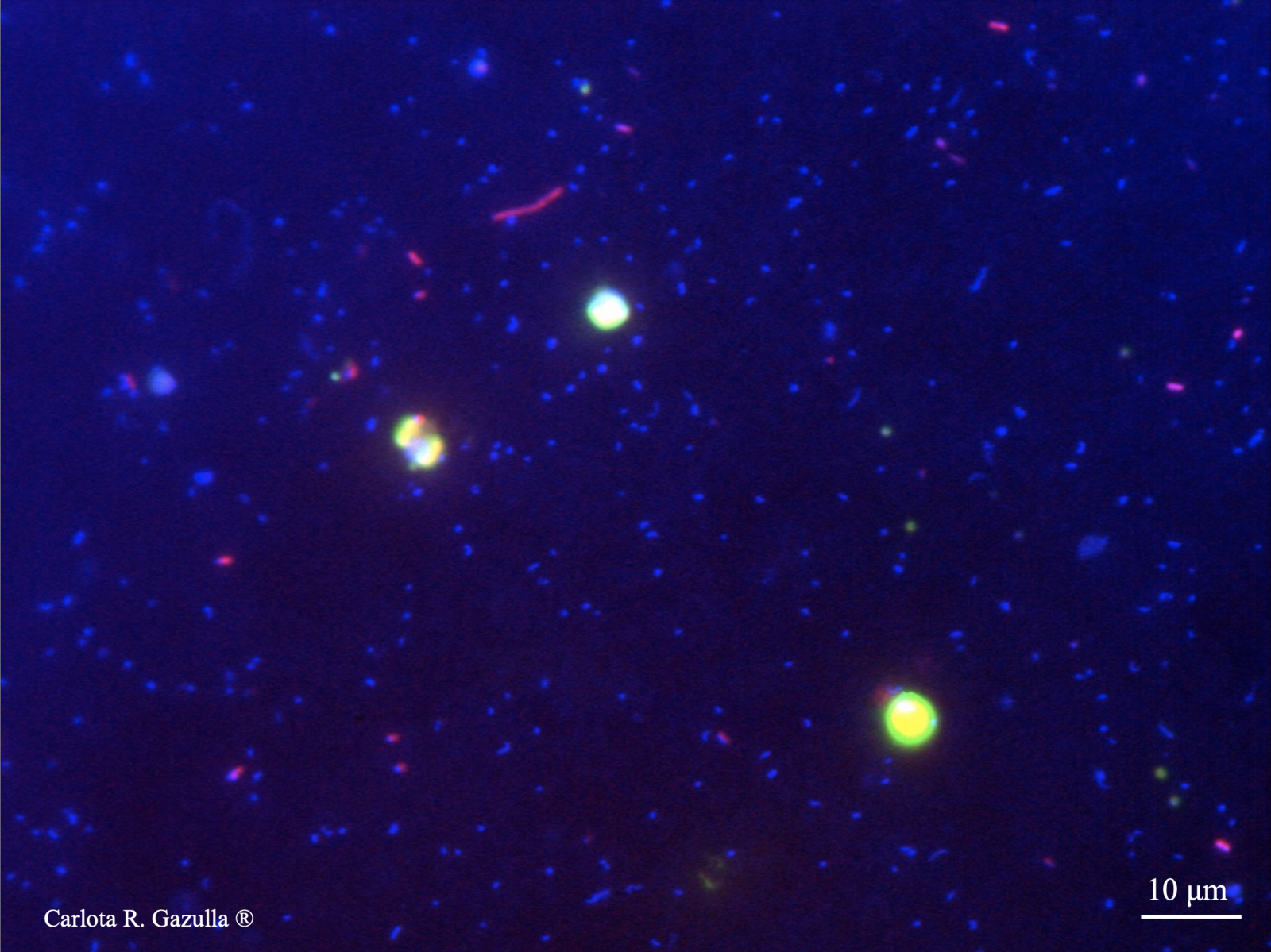Optimizing the genetic tools to study a relevant group of marine bacteria capable of using solar energy
By Carlota R. Gazulla and collaborators
 The marine ecosystem is home to a huge diversity of microorganisms displaying different functions. To characterize them, microbial ecologists have developed different molecular approaches to extract information from their DNA, given that these microorganisms cannot be identified morphologically. For example, to study the diversity of bacteria, we usually amplify a fragment of the 16S rRNA gene using specific “primers”, small DNA sequences that surround the gene fragment of interest. The 16S rRNA gene is common to all bacteria, but other marker genes can be used to identify specific functional groups. In this work, we focused on the pufM gene, the genetic marker of the aerobic anoxygenic phototrophic (AAP) bacteria. AAPs are a peculiar functional group of bacteria with a photoheterotrophic metabolism, meaning that they can obtain energy from light but cannot fix inorganic carbon, so they need to grow on dissolved organic matter. Although they are not extremely abundant in the surface ocean, their big size and their high growth rates makes them important components of the ocean carbon cycling. However, some studies have shown that the composition of AAP communities differs when they are analysed based on the amplification of the pufM gene or on other more recent techniques like metagenomics. To clarify this problem, we evaluated the primers that have been used to amplify the pufM gene, designed new ones and compared the diversity information obtained with that from metagenomics, a genetic technique that does no rely on primers. To do so, we collected DNA sequences from different marine habitats to build a database for the pufM gene and analyse the performance of different primers in recovering the existing pufM diversity. Then, we compared the composition of marine AAP communities retrieved with different combinations of these primers, to that of the communities obtained with metagenomics. We show that the primers that have been traditionally employed recover preferentially, and thus overestimate, some groups like Gammaproteobacteria and Alphaproteobacteria, while they fail to capture a large part of uncultured species. Finally, we discuss the implications of these findings and propose the best set of primers to study the diversity of AAPs in the ocean.
The marine ecosystem is home to a huge diversity of microorganisms displaying different functions. To characterize them, microbial ecologists have developed different molecular approaches to extract information from their DNA, given that these microorganisms cannot be identified morphologically. For example, to study the diversity of bacteria, we usually amplify a fragment of the 16S rRNA gene using specific “primers”, small DNA sequences that surround the gene fragment of interest. The 16S rRNA gene is common to all bacteria, but other marker genes can be used to identify specific functional groups. In this work, we focused on the pufM gene, the genetic marker of the aerobic anoxygenic phototrophic (AAP) bacteria. AAPs are a peculiar functional group of bacteria with a photoheterotrophic metabolism, meaning that they can obtain energy from light but cannot fix inorganic carbon, so they need to grow on dissolved organic matter. Although they are not extremely abundant in the surface ocean, their big size and their high growth rates makes them important components of the ocean carbon cycling. However, some studies have shown that the composition of AAP communities differs when they are analysed based on the amplification of the pufM gene or on other more recent techniques like metagenomics. To clarify this problem, we evaluated the primers that have been used to amplify the pufM gene, designed new ones and compared the diversity information obtained with that from metagenomics, a genetic technique that does no rely on primers. To do so, we collected DNA sequences from different marine habitats to build a database for the pufM gene and analyse the performance of different primers in recovering the existing pufM diversity. Then, we compared the composition of marine AAP communities retrieved with different combinations of these primers, to that of the communities obtained with metagenomics. We show that the primers that have been traditionally employed recover preferentially, and thus overestimate, some groups like Gammaproteobacteria and Alphaproteobacteria, while they fail to capture a large part of uncultured species. Finally, we discuss the implications of these findings and propose the best set of primers to study the diversity of AAPs in the ocean. Read the full study here:
Gazulla, C.R., Cabello, A.M., Sánchez, P. et al. A Metagenomic and Amplicon Sequencing Combined Approach Reveals the Best Primers to Study Marine Aerobic Anoxygenic Phototrophs. Microb Ecol (2023). https://doi.org/10.1007/s00248-023-02220-y
Text written by Carlota R. Gazulla and edited by Clara Ruiz and Félix Picazo
